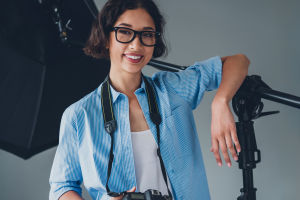Among the many remarkable image-makers of the past century, three stand out for their shared fascination with urban environments and their groundbreaking use of color.
Saul Leiter, Ernst Haas, and Franco Fontana brought a unique perspective to everyday life by combining artistic sensibility with innovative color work.
Their photos didn't just document—they transformed ordinary scenes into vibrant compositions. These artists elevated photography by showing how color could speak as powerfully as form or composition.
Saul Leiter: The Quiet Observer of New York
Born: 1923
Nationality: American
Active years: From the 1940s to early 2000s
Main location: New York City
Style: Street photography with a painterly, abstract aesthetic
What Makes Him Unique:
Leiter was a pioneer in using color film for street photography at a time when most artists worked in black and white. His work features soft light, reflections, window fog, and layered compositions. His images feel intimate yet distant, poetic yet grounded in reality.
Artistic Touch:
His background in painting deeply influenced his visual style. He often used unusual framing—partially obscured subjects, blurred edges, and muted tones—to turn street scenes into dreamy tableaus.
Commercial Reach:
Though largely under-recognized for decades, his work gained major attention in the early 2000s. Today, his prints are in high demand, and he is widely respected as a leading figure in modern photography.
Ernst Haas: Movement and Emotion in Color
Born: 1921
Nationality: Austrian-American
Active years: 1940s to 1986
Main locations: United States and Europe
Style: Expressive use of color and motion
What Makes Him Unique:
Haas was one of the first major artists to embrace color photography as a serious medium. He pushed the technical limits of color film and was an early user of dye transfer printing, achieving exceptional saturation and contrast.
Signature Approach:
He was especially interested in capturing movement—cars rushing by, dancers in motion, or city crowds mid-step. His photos often feature intentional blur and rich colors, evoking energy rather than stillness.
Recognition and Sales:
Haas was a successful image-maker both artistically and professionally. His work appeared in major publications such as "Life" and "Vogue", and he was one of the first photographers to have a solo color exhibition at MoMA in New York.
Franco Fontana: Landscapes of Urban Geometry
Born: 1933
Nationality: Italian
Active years: 1960s to present
Main locations: Italy and international cities
Style: Abstract use of color in architectural and landscape settings
What Makes Him Unique:
Fontana is known for turning everyday urban structures into abstract works. He used saturated color and bold geometry to reimagine streets, buildings, and facades. His photographs often resemble graphic design more than traditional photography.
Technical Innovation:
By overexposing and tightly cropping his images, Fontana emphasized form and hue over narrative. His visual language is clean, minimal, and striking—often focusing on just lines, shapes, and shadows.
Commercial Strength:
Fontana's images are widely collected and featured in galleries across the world. He also collaborated with leading companies for advertising campaigns, merging artistic exploration with wide appeal.
Conclusion: Color as a Universal Language
These three artists—Leiter, Haas, and Fontana—demonstrated how vibrant hues can transform everyday city scenes into powerful visual stories. Each used color in a different way: soft and poetic, dynamic and expressive, bold and minimal. Yet all three reshaped how we perceive urban environments through the lens.
For Lykkers who love photography, these masters offer timeless inspiration. They proved that color isn't just an aesthetic choice—it's a storytelling tool that captures emotion, rhythm, and atmosphere like no other.


